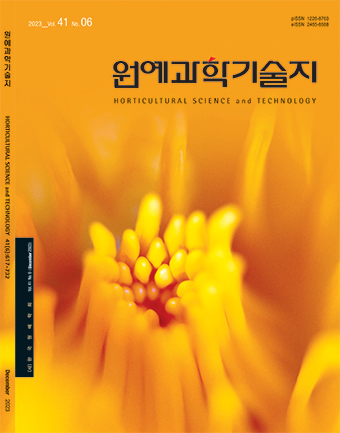Research Article
- Publisher :KOREAN SOCIETY FOR HORTICULTURAL SCIENCE
- Publisher(Ko) :원예과학기술지
- Journal Title :Horticultural Science and Technology
- Journal Title(Ko) :원예과학기술지
- Volume : 38
- No :5
- Pages :717-729
- Received Date : 2020-05-27
- Revised Date : 2020-06-22
- Accepted Date : 2020-06-27
- DOI :https://doi.org/10.7235/HORT.20200065



 Horticultural Science and Technology
Horticultural Science and Technology









